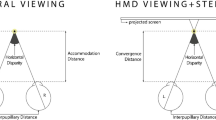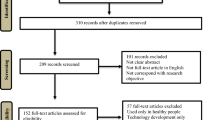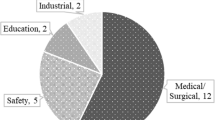Abstract
Physiotherapy is a rehabilitation specialty that helps alleviate physical impairments and promotes patient’s mobility and quality of life. It consists of equipment and personnel to provide mechanically forced movements and various exercises that help retain and enhance motor movements in patients suffering from physical injuries or ailments like Parkinson’s disease, Arthritis, Carpal Tunnel Syndrome, Stroke, etc. This paper proposes an entertaining way to perform routine exercises, which do not require physical intervention, by packaging them into a Virtual Reality (VR) game environment for such patients to enhance joint and muscle mobility while also providing continuous monitoring of vital signs using Bio-sensors. The game provides various degrees of muscle exercises and Microsoft Kinect (Optical Sensor) is used to track patient’s skeletal movements. Prompt measures are also provided if the data from Bio-sensors (mounted on patient’s body and connected wirelessly to the processing unit) starts to deviate from medically accepted normal ranges. We have developed the prototype using Unity 3D alongwith the VR headset Oculus Rift. The proposed prototype has immense significance in the field of rehabilitation and improving quality of daily life activities for the elderly. While experimenting with the prototype it was found that the used Bio-sensors provided an error no greater than one unit of measurement, which is negligible for the purpose of physiotherapy exercise monitoring considering the span of the normal range values. Moreover, the Kinect provided an error of just 5 mm during skeletal measurements thereby engendering robust deployment of the proposed unit.
















Similar content being viewed by others
References
Kim, J., Jung, H., Kang, M., & Chung, K. (2016). 3D human-gesture interface for fighting games using motion recognition sensor. Wireless Personal Communications, 89(3), 927–940.
da Silva, G. A. (2014). Multimodal vs. unimodal physiological control in videogames for enhanced realism and depth. In Proceedings of DiGRA 2007 conference on situated play (pp. 550–558).
Nacke, L., Kalyn, M., Lough, C. & Mandryk, R. (2011). Biofeedback game design: Using direct and indirect physiological control to enhance game interaction. In Proceedings of the SIGCHI conference on human factors in computing systems (pp. 103–112).
Ambinder, M. (2011). Biofeedback in gameplay: How valve measures physiology to enhance gaming experience. In Game developers conference.
Casellato, C., Pedrocchi, A., Zorzi, G., Vernisse, L., Ferrigno, G., & Nardocci, N. (2013). EMG-based visual-haptic biofeedback: A tool to improve motor control in children with primary dystonia. IEEE Transactions on Neural Systems and Rehabilitation Engineering, 21(3), 474–480. http://www.ncbi.nlm.nih.gov/pubmed/23060345, http://ieeexplore.ieee.org/document/6324447/.
Kinect-windows app development. https://developer.microsoft.com/en-us/windows/kinect. Accessed on June 9, 2017.
de Urturi Breton, Z. S., Zapirain, B. G., & Zorrilla, A. M. (2012). KiMentia: Kinect based tool to help cognitive stimulation for individuals with dementia. In 2012 IEEE 14th international conference on e-health networking, applications and services, Healthcom 2012 (pp. 325–328).
Martín-Ruiz, M.-L., Máximo-Bocanegra, N., & Luna-Oliva, L. (2016). A virtual environment to improve the detection of oral-facial malfunction in children with cerebral palsy. Sensors, 16(4), 444.
Pompeu, J. E., Arduini, L. A., Botelho, A. R., Fonseca, M. B. F., Pompeu, S. M. A. A., Torriani-Pasin, C., et al. (2014). Feasibility, safety and outcomes of playing Kinect Adventures! For people with Parkinson’s disease: A pilot study. Physiotherapy (United Kingdom), 100(2), 162–168.
Galna, B., Barry, G., Jackson, D., Mhiripiri, D., Olivier, P., & Rochester, L. (2014). Accuracy of the Microsoft Kinect sensor for measuring movement in people with Parkinson’s disease. Gait and Posture, 39(4), 1062–1068.
Gonzlez-Ortega, D., Daz-Pernas, F. J., Martinez-Zarzuela, M., & Antn-Rodrguez, M. (2014). A Kinect-based system for cognitive rehabilitation exercises monitoring. Computer Methods and Programs in Biomedicine, 113(2), 620–631.
Ar, I., & Akgul, Y. S. (2014). A computerized recognition system for the home-based physiotherapy exercises using an RGBD camera. IEEE Transactions on Neural Systems and Rehabilitation Engineering, 22(6), 1160–1171.
Anton, D., Goni, A., Illarramendi, A., Torres-Unda, J. J. & Seco, J. (2013). KiReS: A Kinect-based telerehabilitation system. In 2013 IEEE 15th international conference on e-health networking, applications and services (Healthcom 2013) (pp. 444–448). IEEE.
Lange, B., Chang, C. Y., Suma, E., Newman, B., Rizzo, A. S., & Bolas, M. (2011). Development and evaluation of low cost game-based balance rehabilitation tool using the Microsoft Kinect sensor. IEEE Engineering in Medicine and Biology Conference, 2011, 1831–1834.
Radtka, S., Hone, R., Brown, C., Mastick, J., Melnick, M. E., & Dowling, G. A. (2013). Feasibility of computer-based videogame therapy for children with cerebral palsy. Games for Health Journal, 2(4), 222–228. http://online.liebertpub.com/doi/abs/10.1089/g4h.2012.0071
Gieser, S. N., Metsis, V. & Makedon, F. (2014). Quantitative evaluation of the Kinect skeleton tracker for physical rehabilitation exercises. In Proceedings of the 7th international conference on PErvasive technologies related to assistive environments (p. 48). ACM.
Feasel, J., Whitton, M. C., Kassler, L., Brooks, F. P., & Lewek, M. D. (2011). The integrated virtual environment rehabilitation treadmill system. IEEE Transactions on Neural Systems and Rehabilitation Engineering, 19(3), 290–297.
Huber, M. E., Seitz, A. L., Leeser, M., & Sternad, D. (2014). Validity and reliability of Kinect for measuring shoulder joint angles. In 2014 40th annual northeast bioengineering conference (NEBEC) (pp. 1–2). IEEE. http://ieeexplore.ieee.org/lpdocs/epic03/wrapper.htm?arnumber=6972818.
Baldominos, A., Saez, Y., & del Pozo, C. G. (2015). An approach to physical rehabilitation using state-of-the-art virtual reality and motion tracking technologies. Procedia Computer Science, 64, 10–16.
Ortiz-Vigon Uriarte, I. L., Garcia-Zapirain, B., & Garcia-Chimeno, Y. (2015). Game design to measure reflexes and attention based on biofeedback multi-sensor interaction. Sensors, 15(3), 6520–6548.
Tivatansakul, S., & Ohkura, M. (2013). Healthcare system focusing on emotional aspects using augmented reality-implementation of breathing control application in relaxation service. In 2013 international conference on biometrics and Kansei engineering (ICBAKE) (pp. 218–222). IEEE.
Rafael, A., & Algar, T. (2014). Serious games for overcoming phobias—The benefits of game elements. Ph.D. dissertation, University of Skovde.
Galna, B., Jackson, D., Schofield, G., McNaney, R., Webster, M., Barry, G., et al. (2014). Retraining function in people with Parkinson’s disease using the Microsoft Kinect: Game design and pilot testing. Journal of Neuroengineering and Rehabilitation, 11(1), 1.
Duarte, N., Postolache, O., & Sharcanski, J. (2014). KSGphysio Kinect serious game for physiotherapy. In International conference and exposition on electrical and power engineering (No. Epe, pp. 16–18).
(2012). Exercise for peoples with Parkinson’s. http://www.parkinson.ca/atf/cf/%7B9ebd08a9-7886-4b2d-a1c4-a131e7096bf8%7D/EXERCISEMAR2012_EN.PDF. Accessed on June 9, 2017.
e-health sensor platform v2.0 for arduino and raspberry pi rbiometric/medical applications. https://www.cooking-hacks.com/documentation/tutorials/ehealth-biometric-sensor-platform-arduino-raspberry-pi-medical. Accessed on June 9, 2017.
Initialization and sensor enumeration. https://developer.oculus.com/documentation/pcsdk/latest/concepts/dg-sensor/. Accessed on June 9, 2017.
Sensor fusion: Keeping it simple|oculus. https://developer.oculus.com/blog/sensor-fusion-keeping-it-simple/. Accessed on June 9, 2017.
Normal vital signs: Normal vital signs. http://emedicine.medscape.com/article/2172054-overview. Accessed on June 9, 2017.
Acknowledgements
This research work has been carried out in Research Lab-1 and Audio Video Conference room IIT Building, Mehran University of Engineering and Technology, Jamshoro. The authors are thankful to the DEAN FEECE Professor Dr. Bhawani Shankar Chowdhry and Mehran University of Engineering and Technology Jamshoro for facilitating this research. We are thankful to Dr. Khursheed Memon, MBBS, Senior Woman Medical Officer (retired), Liaquat University of Medical and Health Sciences Hospital, Jamshoro, Pakistan, a PD patient and Prof. Dr. Bhawani Shankar, Dean FEECE, MUET, Jamshoro for volunteering as test subjects in this research. We are also grateful to the consultants of the patient, Dr. Maimoona Siddiqui, MBBS, FCPS (Neurology), Associate Professor and Head of Department Neurology, Shifa International Hospital, Islamabad, Pakistan, Dr. Azra Zafar, MBBS, FCPS (Neurology), Liaquat National Hospital, Karachi, Pakistan and Dr. Ismail Abdul Latif Khatri, MBBS, MD (Neurology, USA), Consultant neurologist and stroke specialist at King Abdul Aziz Medical City, Riyadh, Saudi Arabia, for their guidelines. In addition, we are thankful to Dr. Kashif Ahmed Siddiqui, MBBS, FCPS, Orthopedic Surgeon, Civil Hospital Kotri and Dr. Muhammad Arshad, BSPT, Head of Department, AL SAFA Physiotherapy center Karachi, Pakistan for their valuable input in this research.
Author information
Authors and Affiliations
Contributions
AB and KM conceived and designed the experiments; KM and ARM designed the game environment and VR app while AB and KM formulated the game methods and developed the software algorithms. AB, KM, ARM and SMZAS performed the experiments. AB and SMZAS analyzed the vital signs, head and neck exercise data while KM and ARM analyzed the limb and arms activity data. AB and KM analyzed the data and contributed in analysis tools. AB, KM, ARM and SMZAS drafted the paper. All the authors have revised and finalized the manuscript.
Corresponding author
Rights and permissions
About this article
Cite this article
Baqai, A., Memon, K., Memon, A.R. et al. Interactive Physiotherapy: An Application Based on Virtual Reality and Bio-feedback. Wireless Pers Commun 106, 1719–1741 (2019). https://doi.org/10.1007/s11277-018-5382-5
Published:
Issue Date:
DOI: https://doi.org/10.1007/s11277-018-5382-5




